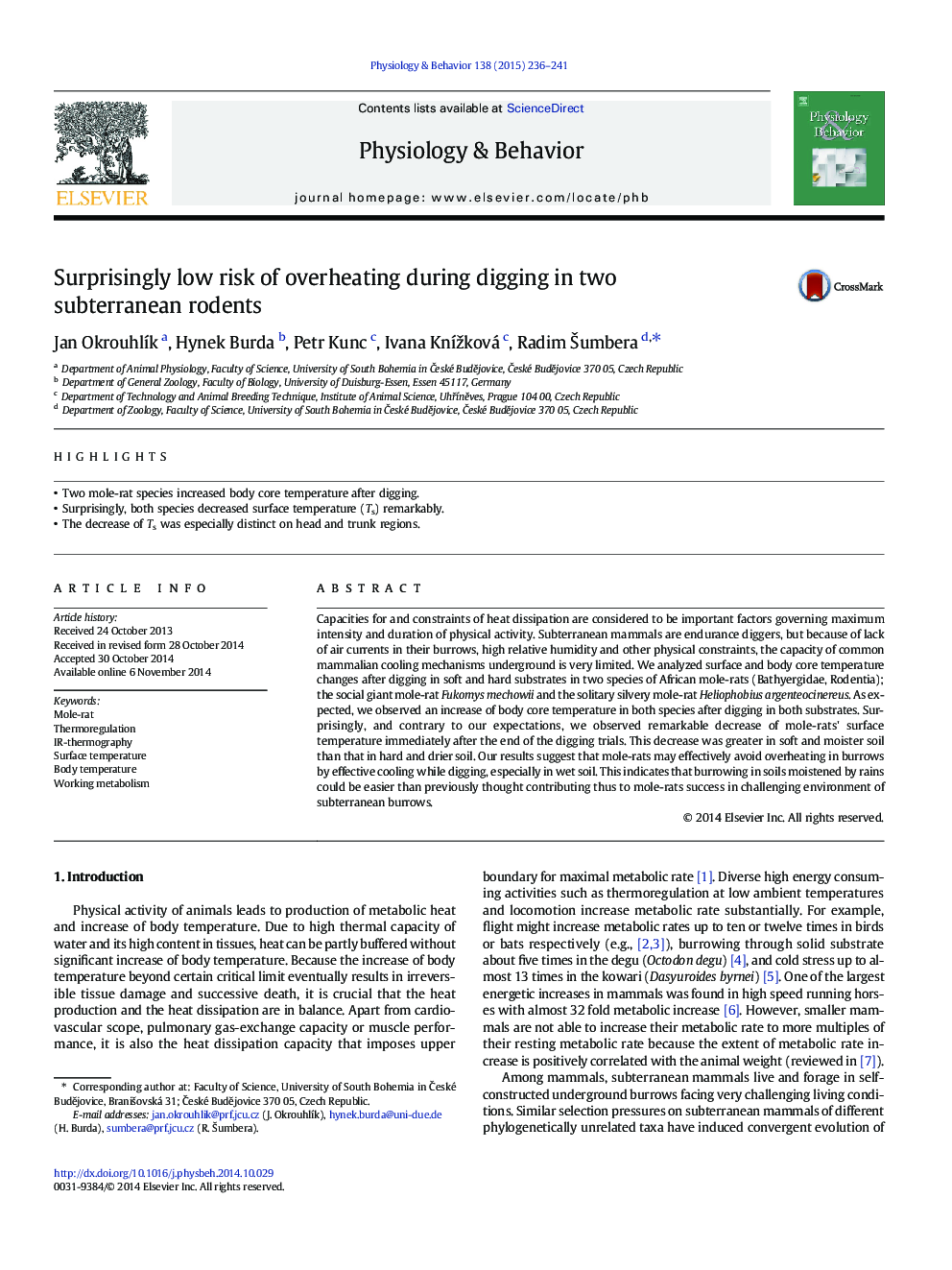| Article ID | Journal | Published Year | Pages | File Type |
|---|---|---|---|---|
| 2844216 | Physiology & Behavior | 2015 | 6 Pages |
•Two mole-rat species increased body core temperature after digging.•Surprisingly, both species decreased surface temperature (Ts) remarkably.•The decrease of Ts was especially distinct on head and trunk regions.
Capacities for and constraints of heat dissipation are considered to be important factors governing maximum intensity and duration of physical activity. Subterranean mammals are endurance diggers, but because of lack of air currents in their burrows, high relative humidity and other physical constraints, the capacity of common mammalian cooling mechanisms underground is very limited. We analyzed surface and body core temperature changes after digging in soft and hard substrates in two species of African mole-rats (Bathyergidae, Rodentia); the social giant mole-rat Fukomys mechowii and the solitary silvery mole-rat Heliophobius argenteocinereus. As expected, we observed an increase of body core temperature in both species after digging in both substrates. Surprisingly, and contrary to our expectations, we observed remarkable decrease of mole-rats' surface temperature immediately after the end of the digging trials. This decrease was greater in soft and moister soil than that in hard and drier soil. Our results suggest that mole-rats may effectively avoid overheating in burrows by effective cooling while digging, especially in wet soil. This indicates that burrowing in soils moistened by rains could be easier than previously thought contributing thus to mole-rats success in challenging environment of subterranean burrows.
